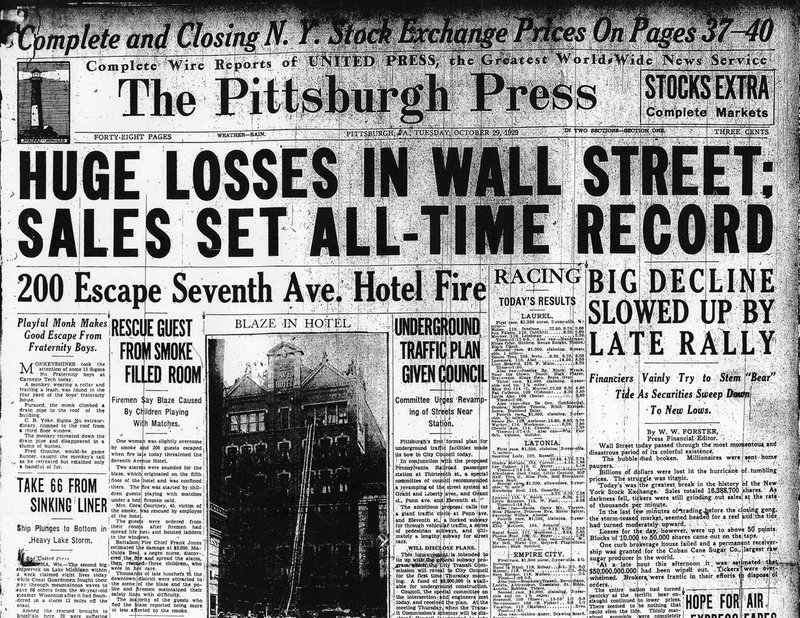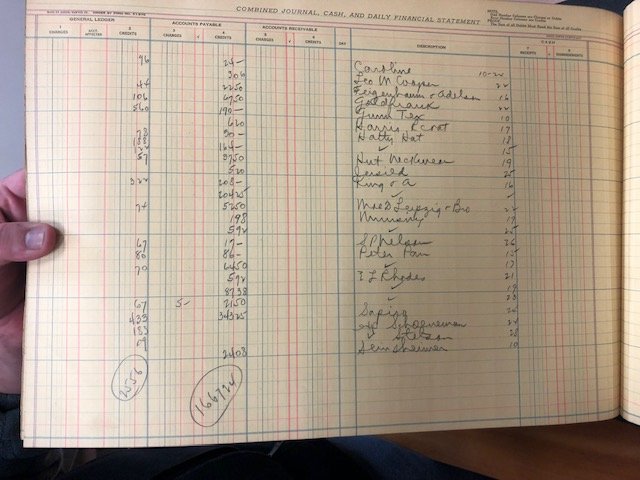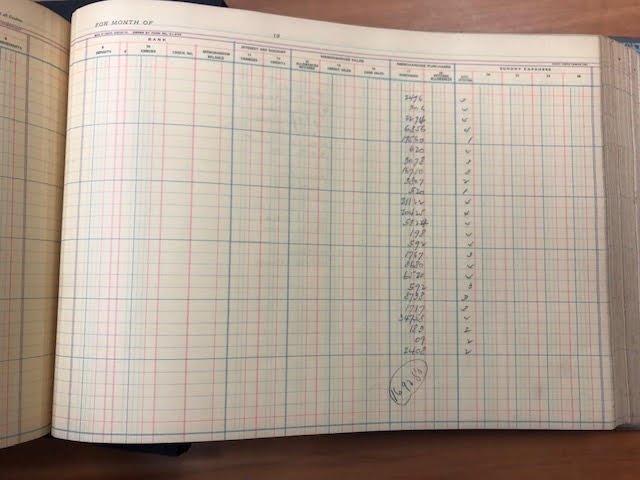Student Work
The Start of the Great Depression
By: Jake Goldberg

The Pittsburgh Press newspaper cover on October 29, 1929, Photo credit from Old Pittsburgh photos and stories | The Digs
Black Tuesday
The Ole Miss Library archive’s collection from Neilson’s Department Store contains financial ledgers and daily money books that date back through the entirety of the store’s 180-year history. J.E. Neilson’s Department Store has been a staple in Oxford, Mississippi since it first opened in 1839, and its ledgers tell the story of every name and credit line for every transaction made in the store from 1839 to the present day. As the oldest store in the south and the central department store for local residents, Neilson’s ledgers can be used to illustrate historical snapshots of Oxford, Mississippi at any point in its operating history. One such cataclysmic event in the course of the American economy and society was the Great Depression of the 1930s, a period of economic downturn that would significantly affect the state of Mississippi and whose historical impact rippled down to the pages of Neilson’s department store daybooks where it can be analyzed and displayed today.
The Great Depression refers to the time of the largest economic recession in American History during the 1930s. Following the Stock Market Crash of 1929, many of the largest and most powerful financial institutions in America and the world would go bankrupt or fail. The following economic depression would be to the detriment of millions of American workers and capital-holders alike, especially in deep southern states like Mississippi where the old agricultural economy was struggling to develop into the new society of the industrial world.[1]
Before the beginning of the Great Depression, six out of ten Mississippians still lived on working farms, of which 65% had no ownership over the land they worked.[2] This high percentage of land-borrowing was indicative of the widespread sharecropping system that had come to personify southern Agriculture in the post-reconstruction era. Sharecropping was a model for agricultural employment in which the incomes of farmers who rented and worked small plots of land depended on the seasonal market price of the crops they harvested. Times were already difficult for these southern farmers, of whom less than one percent had electricity by the start of the Great Depression.[3] In a region already struggling to industrialize, the health of the sharecropping economy was the backbone of southern society at the turn of the 1930s. When the Stock Market Crash of 1929 destroyed the value of the currency and the funding behind half of the industrial and agricultural development of Mississippi disappeared[4], it compounded the damage that was done by the drought of 1930 to create conditions that proved impossible for new industry and sharecropping alike to survive under.[5]
The archived ledgers of the Neilson’s collection from this period can be looked at as a historical recording of the economic tumult and upheaval that the Great Depression caused in Mississippi and Lafayette County. A great example of history’s reflection in the pages of Nielson’s is visible in the pages displayed in this exhibit. The Great Depression began with the stock market crash of October 29th, 1929, a day is known infamously as “Black Tuesday.” In ledger #38 of the Neilson’s Department Store collection (daybook for 1927-1929), the pages on display that were used on October 29th, 1929 show evidence of the frenzied and widespread reaction that residents of Lafayette county had to news of the cataclysmic stock market crash. While one might notice that on most days, Neilson’s ledger only had to set aside a single page to record transactions, the ledger’s records for Black Tuesday show over four pages of sales including most every notable household on the store’s list of customers.
These pages and the records they show paints a picture of the moments when news of the stock market reached Oxford, Mississippi and people rushed to exchange their cash and credit into material goods while the U.S. dollar still held value and before the banks holding many people’s assets failed. Over the course of the Great Depression that followed, Mississippi bank deposits would fall more than 50% from $101 million to $49 million, and more than half of the state’s 52,000 industrial jobs would be lost.[6] Nearly 90 years after the fact, the confusion and turmoil of the day the Great Depression began can be seen in the pages of the ledgers preserved in the Neilson’s Archive collection.
Ledger 38, October 29, 1929 from Neilson’s Collection, Department of Archives and Special Collections, The University of Mississippi Libraries.

Ledger 38, October 29, 1929 from Neilson’s Collection, Department of Archives and Special Collections, The University of Mississippi Libraries.

Ledger 38, October 29, 1929 from Neilson’s Collection, Department of Archives and Special Collections, The University of Mississippi Libraries.

Ledger 38, October 29, 1929 from Neilson’s Collection, Department of Archives and Special Collections, The University of Mississippi Libraries.
[1] Lester, Connie. “Economic Development in the 1930s: Balance Agriculture With Industry.” Gambling in Mississippi: Its Early History | Mississippi History Now. May 2004. Accessed January 08, 2019.
[2] Stringer, Debbie. “It Was the Worst of times | Today in Mississippi | Featured Article.” Today in Mississippi. Accessed January 08, 2019. http://www.todayinmississippi.com/featured_article/article/5922.
[3] Ibid.
[4]Lester, Connie. “Economic Development in the 1930s: Balance Agriculture With Industry.” Gambling in Mississippi: Its Early History | Mississippi History Now. May 2004. Accessed January 08, 2019. http://mshistorynow.mdah.state.ms.us/articles/224/economic-development-in-the-1930s-balance-agriculture-with-industry.
[5]McCarty, Kenneth G. “Depression and Hard Times in Mississippi: Letters from the William M. Colmer Papers.” Mississippi History Now. December 2000. Accessed January 7, 2019. http://www.mshistorynow.mdah.ms.gov/articles/221/depression-and-hard-times-in-mississippi-letters-from-the-william-m-colmer-papers. – “One quarter of all property in Mississippi, including 20% of all farmland, would be defaulted, seized, and auctioned for tax revenue by counties during the Great Depression.”
[6] Lester, Connie. “Economic Development in the 1930s: Balance Agriculture With Industry.” Gambling in Mississippi: Its Early History | Mississippi History Now. May 2004. Accessed January 08, 2019. http://mshistorynow.mdah.state.ms.us/articles/224/economic-development-in-the-1930s-balance-agriculture-with-industry.
